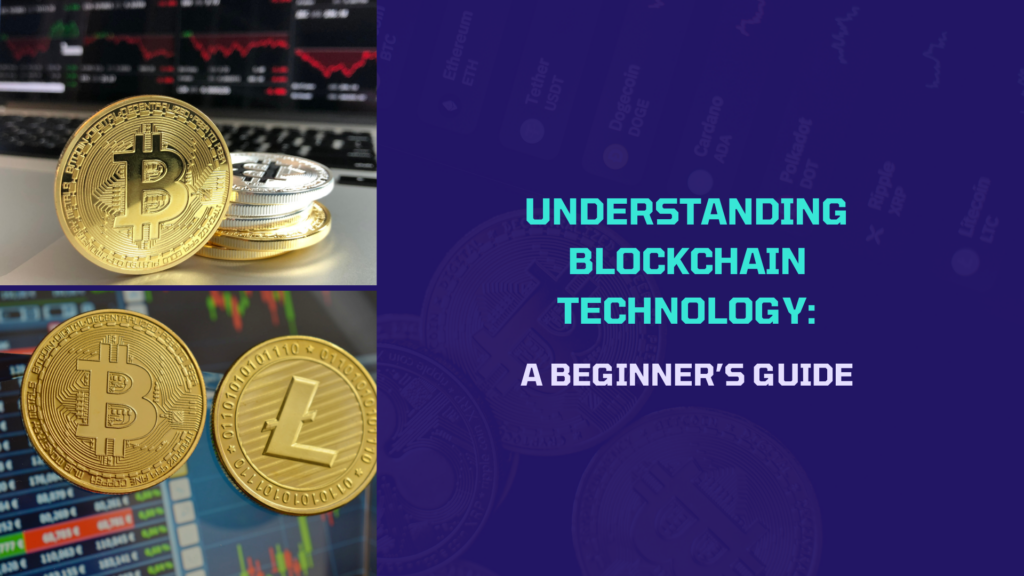Understanding Blockchain Technology: A Beginner’s Guide
Blockchain technology has become one of the most talked-about innovations of the 21st century. From powering cryptocurrencies like Bitcoin to transforming industries like healthcare and supply chain management, blockchain is reshaping how we think about data, trust, and transactions. But what exactly is blockchain, and why is it so revolutionary? In this beginner’s guide, we’ll break down the basics of blockchain, how it works, its applications, and its advantages in simple terms.
What is Blockchain?
At its core, a blockchain is a type of digital ledger that records transactions in a secure, transparent, and immutable way. Imagine a notebook where every page (or “block”) contains a list of transactions. Once a page is filled, it’s added to a stack of previous pages (forming a “chain”). This chain is stored across a network of computers, making it decentralized and tamper-proof.
Key Features of Blockchain
Decentralization: Unlike traditional databases controlled by a single entity (like a bank or government), blockchain is maintained by a network of computers (nodes). This eliminates the need for intermediaries and reduces the risk of fraud.
Transparency: Every transaction on the blockchain is visible to all participants in the network. This transparency builds trust among users.
Immutability: Once a transaction is recorded on the blockchain, it cannot be altered or deleted. This ensures the integrity of the data.
How Does Blockchain Work?
Blockchain operates through a series of steps that ensure security and accuracy:
Transaction Initiation: A user initiates a transaction, such as sending cryptocurrency or recording data.
Verification: The transaction is broadcast to a network of nodes, which validate its authenticity using consensus mechanisms like Proof of Work (PoW) or Proof of Stake (PoS).
Block Creation: Once verified, the transaction is grouped with others into a block.
Block Addition: The new block is added to the existing chain of blocks, creating a permanent record 7.
Completion: The transaction is complete, and the updated blockchain is distributed across the network.
This process ensures that every transaction is secure, transparent, and irreversible.
Applications of Blockchain
Blockchain’s potential extends far beyond cryptocurrencies. Here are some of its most exciting applications:
- Cryptocurrencies
Blockchain is the backbone of cryptocurrencies like Bitcoin and Ethereum. It enables secure, peer-to-peer transactions without the need for banks or governments.
- Supply Chain Management
Blockchain can track products from origin to consumer, ensuring transparency and reducing fraud. For example, Walmart uses blockchain to trace the journey of food products, improving safety and efficiency.
- Healthcare
Blockchain secures patient records, ensuring privacy and enabling seamless sharing between healthcare providers. Projects like MedicalChain are creating decentralized health records that patients can control.
- Digital Identity
Blockchain can create secure digital identities, reducing identity theft and simplifying processes like KYC (Know Your Customer) for banks and governments.
- Smart Contracts
Smart contracts are self-executing agreements written in code. They automatically enforce terms when conditions are met, eliminating the need for intermediaries. For example, a smart contract could release payment to a freelancer once their work is approved.
- Voting Systems
Blockchain-based voting systems can enhance election transparency and prevent fraud. Each vote is recorded on the blockchain, ensuring accuracy and trust.
Advantages of Blockchain
- Enhanced Security
Blockchain’s decentralized nature and cryptographic algorithms make it highly secure. Data stored on the blockchain is nearly impossible to hack or alter.
- Transparency and Trust
Every transaction is visible to all participants, fostering trust and accountability. This is particularly valuable in industries like finance and supply chain management.
- Cost Efficiency
By eliminating intermediaries, blockchain reduces transaction costs. For example, cross-border payments can be processed faster and cheaper using blockchain.
- Immutability
Once data is recorded on the blockchain, it cannot be changed. This ensures the integrity of records, making blockchain ideal for applications like land registries and legal documents.
- Decentralization
Blockchain removes the need for central authorities, giving users more control over their data and transactions. This is particularly beneficial in regions with unstable governments or banking systems.
Challenges and Limitations
While blockchain offers numerous benefits, it’s not without challenges:
Scalability: As more transactions are added, the blockchain can become slower and more resource-intensive.
Energy Consumption: Some blockchain networks, like Bitcoin, require significant energy for mining, raising environmental concerns.
Regulatory Uncertainty: Governments are still figuring out how to regulate blockchain, creating uncertainty for businesses and users.
The Future of Blockchain
Blockchain technology is still evolving, and its potential is vast. By 2026, experts predict that blockchain will play a key role in industries like finance, healthcare, and supply chain management. Innovations like interoperability (allowing different blockchains to communicate) and green blockchain (using energy-efficient algorithms) are paving the way for a more sustainable and connected future.
Conclusion
Blockchain technology is more than just a buzzword—it’s a transformative tool that’s changing how we store, share, and verify data. From cryptocurrencies to supply chains, blockchain’s applications are vast and its advantages are clear. While challenges remain, the future of blockchain looks promising, with endless possibilities for innovation and growth.
